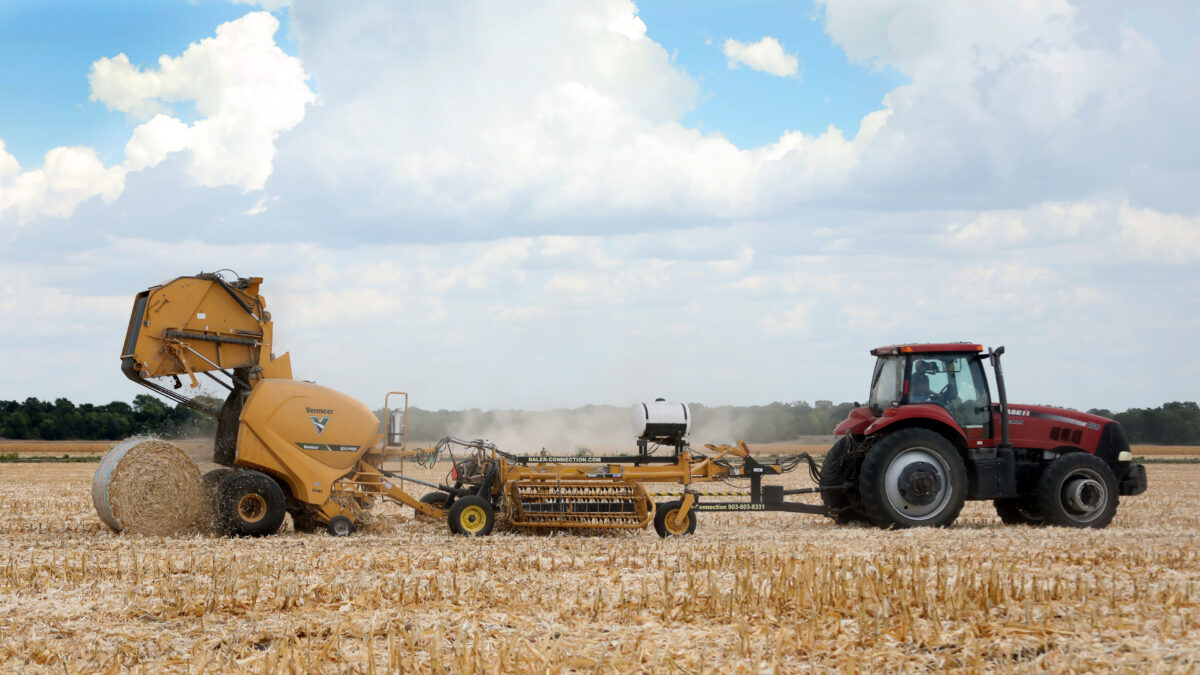U.S. Agriculture Remains Strong Despite Natural Disasters
TOPICS
Natural DisastersGuest Author
Special Contributor to FB.org

photo credit: Texas Farm Bureau, Used with Permission
Guest Author
Special Contributor to FB.org
By Robert Giblin
Most farmers are skilled at managing risks, but some risks, such as weather and natural disasters, are completely out of their control. As American Farm Bureau Federation President Zippy Duvall said on many occasions in 2018, this was in many ways a “perfect storm of perfect storms” for U.S. agriculture. Rare combinations of events compounded the natural disasters that hit the agricultural and food system. But farmers are demonstrating resilience and doing their best to weather the storms.
Hurricane Michael was one of the most powerful hurricanes to ever hit the Florida panhandle. As Michael tracked northeast from the Gulf of Mexico, it dealt a double slap to Georgia, the Virginias, Alabama and the Carolinas, which are just beginning to fully assess the damage and recover from Hurricane Florence.
In North Carolina alone, initial estimates for crop damage, livestock losses and other damage to the state’s agricultural industry from Hurricane Florence are expected to be more than $1.1 billion.
In North Carolina alone, initial estimates for crop damage, livestock losses and other damage to the state’s agricultural industry from Hurricane Florence are expected to be more than $1.1 billion. Crop losses were especially significant because the storm hit near harvest, damaging or ruining cotton, tobacco, peanuts, sweet potatoes and other crops. Farmers took extraordinary measures to protect animals and move them out of harm’s way, which helped limit losses to only about one-half of 1 percent of the state’s 9 million hogs and 853 million chickens and turkeys.
While hurricanes currently occupy center stage, other natural disasters have affected agriculture throughout the country.
The May eruption of Mount Kilauea, in Hawaii, created sulfur dioxide and acid rain that affected fruits, vegetables and flowering plants. Lava covered papaya and orchid plantations and parts of some farms were buried in 20 feet of volcanic rock. Farmers lost their homes and workers were displaced. It also caused losses of business for wineries, flower operations, fruit and vegetable stands, and farm-to-table restaurants.
Wildfires in California and the Pacific Northwest dealt wide-ranging and long-term damage. In California, the Range Fire became the largest wildfire in the state’s history and, along with the River Fire and several others, burned tens of thousands of acres of livestock rangeland, crops used for livestock feed and forests. The fires burned or singed orchards and vineyards, affecting pears, grapes, walnuts and other crops. California’s wine industry is still recovering from the 2017 Napa Valley fire.
In August, the Grass Valley Fire in north-central Washington was controlled in only a day, but was the largest in state history and consumed up to 10,000 acres per hour. It destroyed rangeland, homes, barns and other ranch infrastructure, including about 300 miles of fencing. On horseback, ranchers scrambled to move cattle to safety as flames burned around them. It will be one to two years before cattle can graze the land again.
This fall, corn and soybean harvest started ahead of schedule in the Corn Belt, with the potential for record yields, and hopes that bumper crops would offset low prices. Then, rain started falling in September and, in many parts of the upper Midwest, it never stopped. September rainfall has exceeded normal yearly totals, causing flooding or field conditions that are delaying harvests in southeastern Minnesota, northeastern Iowa, Wisconsin, and northern Illinois and Indiana. Unrelenting waves of storms with high winds and downpours are causing corn stalks to bend over and are creating conditions for rot, mold and other diseases. Damage to feed crops is especially stressful for dairy farmers, who are coping with multiple years of low prices.
The effects of natural disasters extend far beyond the farm. North Carolina is home to several meat, poultry and food processing plants that had to temporarily close. Many employees lost their homes or were dislocated. Once companies resumed operations, managers had to rework logistics to adjust for destroyed roads and highways to get raw products in and finished products out.
Fortunately, numerous organizations are helping farmers cope with the myriad of natural disasters occurring in 2018 and recent years. The Agriculture Department recently launched a disaster recovery tool through its www.farmers.gov website. USDA also partnered with the Federal Emergency Management Agency and other disaster-focused organizations to create the Disaster Recovery Resource Center website at www.usda.gov/topics/disaster, which provides a searchable source of information about disaster-related resources. USDA’s Farm Service Agency also offers many safety net programs to help farmers recover. State governments, state Farm Bureaus and other organizations also are marshalling resources.
Natural disasters occur every year, but the confluence of events that occurred in 2018 is rare. Though it will take a lot of time, work and money, most of those affected will recover. There are signs that legislators and policymakers will take these disaster impacts into account, as they should, whether the topic is risk management or policies regarding forests and rangelands.
For consumers, the natural disasters of 2018 also serve as a reminder that the U.S. is blessed with vast resources, with agricultural diversity and productivity unmatched by any other country or region of the world. Grocery stores remain full. Restaurants and foodservice continue to serve. Food prices have been stable. Natural disasters have affected the full spectrum of agriculture and food production across the nation, but farmers and ranchers are resolved and productive, and food supplies remain plentiful.
Robert Giblin writes, speaks and consults about agricultural and food industry issues, policies and trends.
Trending Topics
VIEW ALL